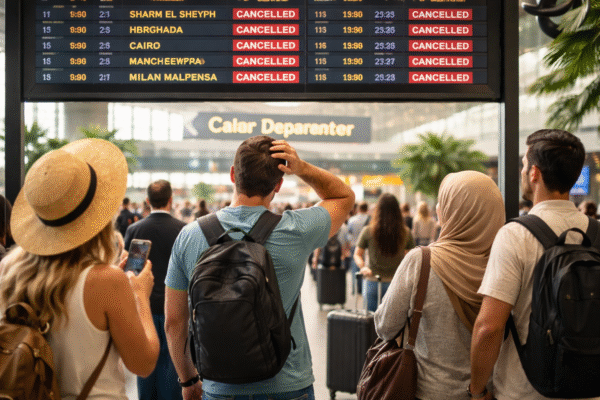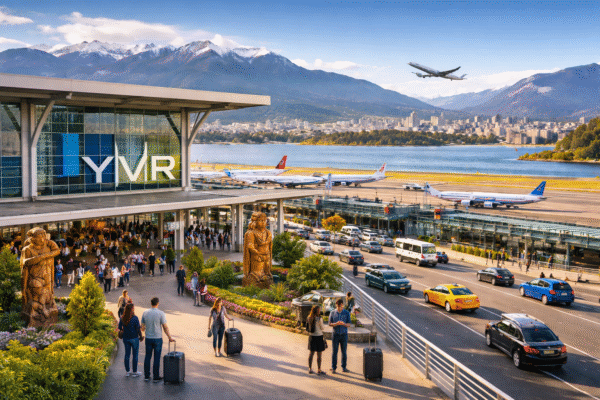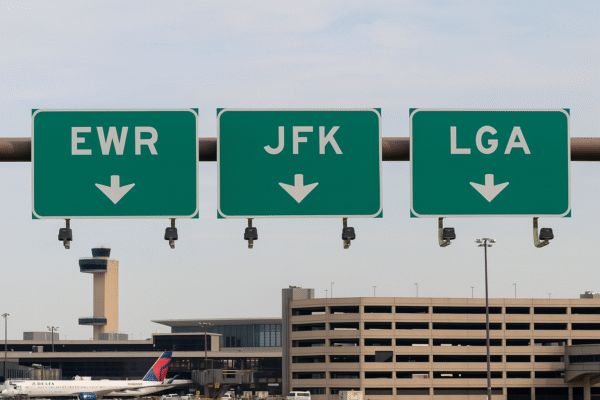The Federal Aviation Administration (FAA) has announced the extension of flight slot usage waivers at Newark Liberty (EWR), John F. Kennedy (JFK), and LaGuardia (LGA) airports through October 2026. The move aims to help airlines manage ongoing congestion challenges linked to a persistent shortage of air traffic controllers.
Why the Waivers Were Extended
1. Severe Controller Shortages
The U.S. air traffic control system continues to grapple with a critical staffing gap—estimated at around 3,000 to 3,500 fewer controllers than needed. This shortage, driven by retirements and hiring bottlenecks, has forced the FAA to rely on mandatory overtime and reduced operational capacity at vital facilities.
2. Congestion in NYC Airspace
The busy and tightly woven airspace of New York’s airports contributes to delays that ripple across the national network. The FAA noted that 75% of national airspace delays originate in the NYC area.
3. Operational Strain & Infrastructure Challenges
At Newark, runway construction, outdated equipment, and past communication outages have prompted temporary flight reductions. The FAA initially extended caps on arrivals and departures through October 2025, and now proposes further continuation to maintain safety and reliability.
4. Relief Under Slot Waivers
Airlines are typically required to use at least 80% of their takeoff and landing slots. These extended waivers allow up to 10% slot under-use, giving carriers like United, Delta, American, and JetBlue flexibility without risking slot forfeiture.
Impact on Airlines and Travelers
- Airlines: Domestic carriers—United, Delta, American, JetBlue, amongst others—are operating under adjusted schedules. The flexibility helps maintain operations despite limited ATC capacity.
- Passengers: While complete shutdowns are avoided, travelers should continue expecting flight delays and schedule changes, especially during peak travel periods.
- Operational Planning: Airlines may upgauge aircraft to handle the same passenger volume with fewer daily flights, a tactic enabled by the waiver.
FAA’s Steps Toward Long-Term Solutions
1. Massive Hiring & Retention Efforts
The FAA is launching a significant recruitment drive, aiming to hire nearly 9,000 new controllers by 2028, including incentives for veterans and academy graduates. Retention packages—like 20% bonuses for controllers delaying retirement—are also being offered.
2. Infrastructure Upgrades
Overhauling outdated radar systems and communications lines is underway. Upgrades include fiber-optic connections, STARS hub enhancements, and modern automated systems to reduce the risk of outages.
3. Congressional Support
A $12.5 billion funding package has been approved by Congress to modernize the air traffic control system, part of a broader strategy to strengthen U.S. aviation infrastructure.
Travelers: What to Know
| Tip | Description |
|---|---|
| Check Updates | Stay informed via airline apps and FAA notices for schedule changes. |
| Expect Delays | Build in extra time for connections and transit. |
| Plan Alternatives | Consider flying from nearby airports when feasible. |
| Stay Flexible | Last-minute changes are more likely, so flexible plans help reduce stress. |
Balancing Reliability with Reality
While operational relief and slot waivers help airlines manage disruptions in the short term, the continued reliance on these measures underscores structural weaknesses in the U.S. air traffic control system. The extended waivers provide necessary breathing room—but lasting improvements will require sustained workforce development and technological modernization.
Bottom Line
The FAA’s extension of slot waivers through October 2026 at Newark, JFK, and LaGuardia reflects a cautious balancing act between maintaining safety and enabling airline operations amid an ongoing staffing crisis. For travelers, the message is clear: expect flexibility, anticipate delays, and plan ahead.
For more travel news like this, keep reading Global Travel Wire


















